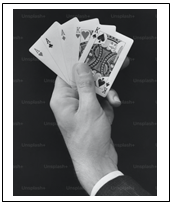 Scott Orlosky has over 25 years of experience in marketing, sales, and application support in a B2B environment. Scott’s career has involved the application of technology solutions to a variety of manufacturing and customer support issues. Scott is passionate about customer service as a strategic core value for business success. Scott Orlosky has over 25 years of experience in marketing, sales, and application support in a B2B environment. Scott’s career has involved the application of technology solutions to a variety of manufacturing and customer support issues. Scott is passionate about customer service as a strategic core value for business success.
|
Gamify Your Website to Increase EngagementThe term “gamify” has been increasingly used when talking about non-game related web sites. The concept is fairly simple: add game-like interactions and mechanics into your web site to make interactions more satisfying and engaging. Like all strategic initiatives this should be a mission-driven process; it has to make sense in the context of your company mission.
A successful gamification of your web site should appear seamless in its execution. A well-executed gamified site should create a sense of accomplishment, or of being helpful, or deliver an unexpected reward. Here’s an example. Suppose your product is a type of Productivity Software. You know that if your customers read through the five tutorials on your web site, they will have a better experience with your software. To gamify this activity, it would be easy to add a progress bar at the bottom of each tutorial to encourage them to complete the entire set of tutorials. Each completed tutorial could then reward the user with a different value of badge; Tin, Aluminum, Bronze, Silver and Gold, for example. A global “tally sheet” could let the user know how many other users have won each type of badge. Now you have taken a task that you want your users to accomplish anyway and made it more goal-driven with rewards along the way.
Good design principles suggest keeping the same look and feel and context of this type of incentive-driven activity within your existing web site. Otherwise it will start to feel contrived. No “Search for the Holy Grail” or “Vision Quest”, just some simple straightforward feedback on how your users are doing with a task that they would normally do anyway. This is how LinkedIn drives their members to complete their profiles. They encourage the completion by suggesting sources of more content while at the same time implying (gently) that the more complete profiles are indicative of people who are better at networking. One type of game element that seems to work well in a variety of businesses is a simple poll. LinkedIn, for example, has a built in polling template that can be sent to all of the followers in your account. The best polls, that get the most responses are usually very simple with three or four options. Any question could be fair game, but it should be related directly to your products or services. Typically results of the poll are revealed either at the time of the user’s vote, or alternatively, after a fixed deadline day. Don’t make them wait too long (a few days at most) or you’ll lose any sense of anticipation. There are lots of companies that will gladly help with gamifying your site. Just be sure to follow best practices. And don’t be afraid to run some beta testing with select users to be sure that the game elements enhance your strategic objectives, without feeling out of place. If done well, you can look forward to more web site visits, longer time on the web site (increased engagement) and a more positive impression of your brand. Well worth the time invested. Read other technology articles |

